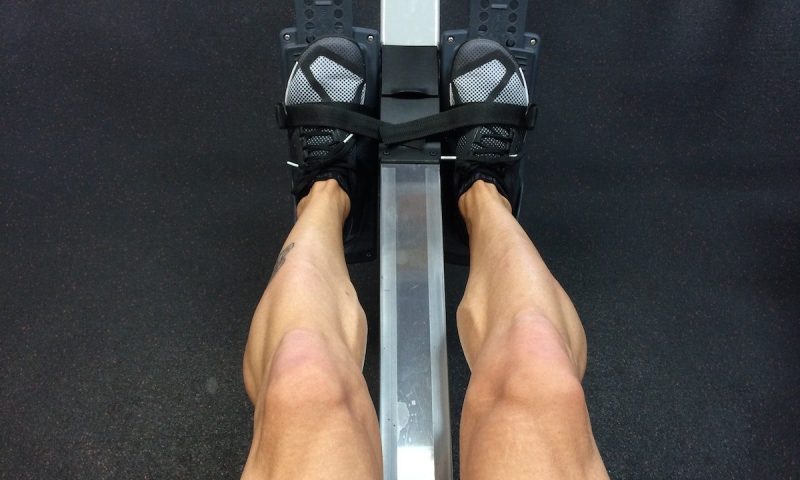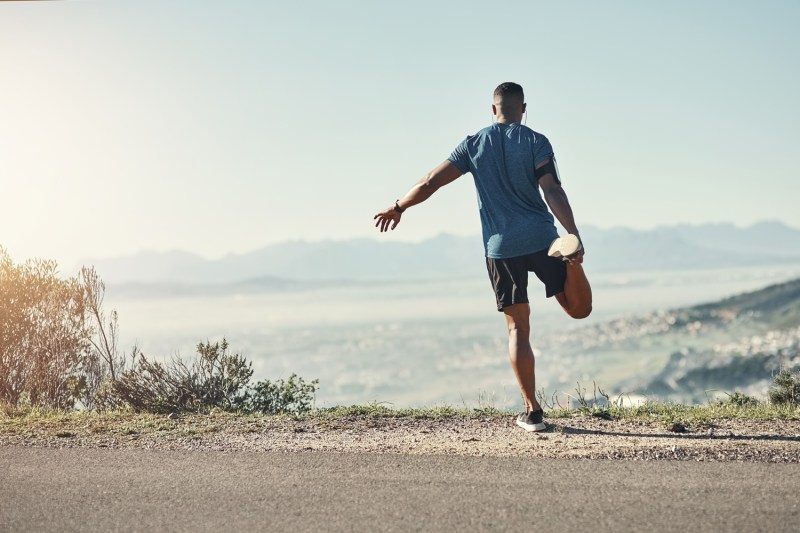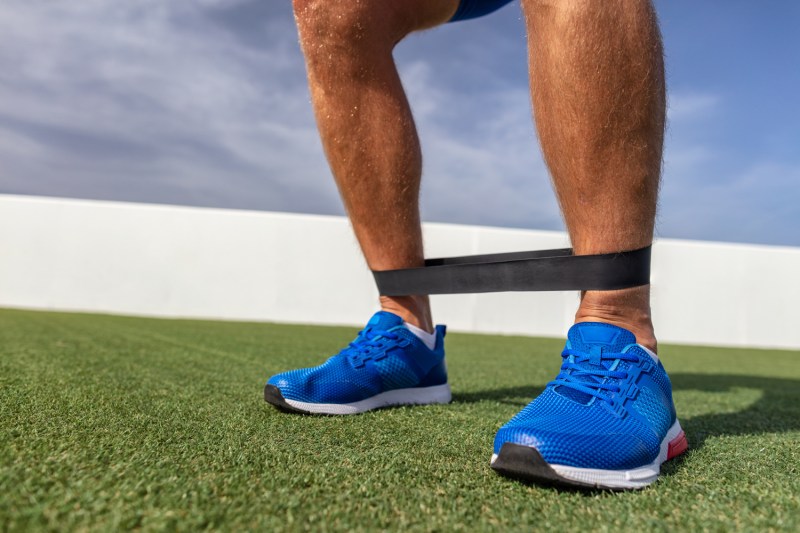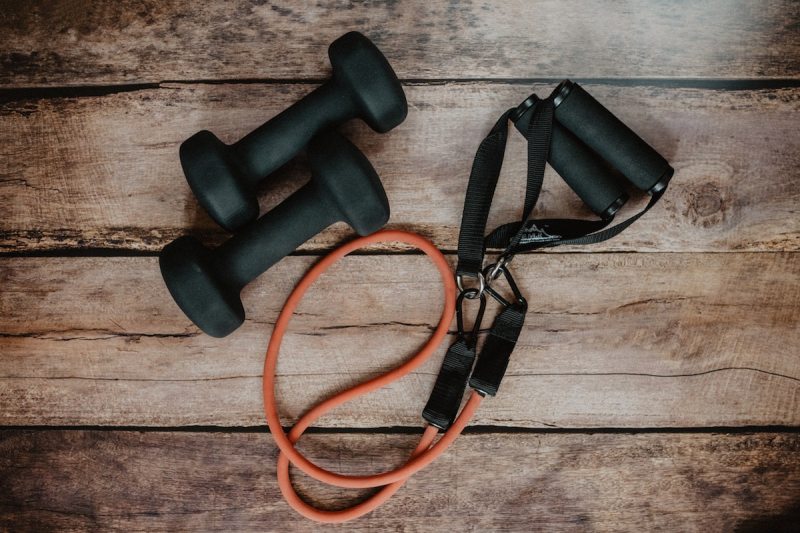Who doesn’t love leg days? Even if you’re not a big fan, a lower body workout means you’re faster on your feet and less likely to experience aches and pains. This helps you get through runs, workouts, or even daily walks while feeling and looking better all the way around.
Let’s be honest: Creating an effective workout routine to strengthen your lower body involves more than just leg day. No matter your goals, the variety of moves you can build into your exercises remains endless. You’ll find many fun and effective workouts for your specific goals as you learn how your muscles work and why you need to train them.
You can also build muscle with resistance bands, which work in a similar way to free weights. They give your muscles resistance to work against, and you’ll grow stronger as a result. Here’s how it works, along with some of our favorite resistance bands workouts.

Anatomy of the lower body
The lower body begins at the hip and goes all the way to your toes. This includes the hip bone, knee, and ankle joints. It also involves major muscle groups like the glutes, quads, hamstrings, adductors, and calves.

What are the benefits of exercising your legs?
Lower body workouts engage many large muscle groups that improve your overall fitness level, athletic performance, and healthy movement patterns. Other benefits include:
- Preventing injury
- Better management of chronic conditions like arthritis, diabetes, and heart disease
- Stress relief
- Increasing metabolism
- Repairing damaged muscle proteins
- Promoting muscle growth
- Boosting immunity
- Getting stronger
- Better aligning your body and correcting muscular imbalances
- Engaging your core and promoting rehabilitation
Believe it or not, the benefits don’t even end there. Lower body workouts can also help with:
- Toning your legs
- Burning calories and promoting weight loss
- Reducing leg pain
- Alleviating lower back and joint pain
- Boosting cognitive function
- Improving mobility, stability, and range of motion
- Managing stress
- Improving posture
How to pick the best resistance bands
Here’s what to consider when looking for the best resistance bands for your lower body workouts.
1. Buy different varieties
Look for bands with different strength or tension levels. If you’re just starting, choose a band with less strength or tension. These are often yellow, while black bands have more strength and tension, but be sure to confirm depending on the manufacturer. Choose between three to five resistance levels because your needs will change as you get stronger.
2. Look for quality bands
If you can, try the bands out before you buy them. Make sure they don’t snap or get stuck while you’re using them. Generally speaking, thicker bands last longer. Check them out before each workout after you buy them, too. If you see breaks or damages, don’t use them. Those snaps can hurt! It’s basically like getting smacked with a giant rubber band. No fun.
3. Consider fabric brands
You can buy elastic, fabric, or rubber latex resistance bands. Fabric brands can be more comfortable and last longer. They also don’t roll up or move around while working out. This can be great for lower body exercises. On the plus side, latex resistance bands stretch more, which is also helpful for upper body exercises and stretching.

6 effective lower body exercises with resistance bands
1. Squats
Squats are a convenient and inexpensive way to build muscles and increase strength. Good resistance bands add some challenges to make squats even more effective.
Muscles targeted
- Glutes
- Quads
- Hamstrings
How to perform
- Stand with your feet a little bit more than hip-width apart.
- Place a band with one loop or a mini loop just above your knees.
- Point your toes slightly outward.
- Place your hands on your hips or straight out in front of you.
- Push your hips back into a sitting position and bend your knees.
- Lower until your thighs are parallel to the floor, with your knees at a 90-degree angle.
- Push back up into a standing position.
2. Straight-leg deadlifts
Deadlifting is one of the best full-body exercises because it adds mass to your frame while increasing strength.
Muscles targeted
- Glutes
- Hamstrings
- Lower back
How to perform
- Stand with your feet shoulder-width apart.
- Step on your resistance band with both feet. Cross the band under your feet if you need more tension.
- Keep your legs and back straight.
- Stick your bottom out.
- Bend at the hips and reach down until you feel your hamstring muscles stretch.
- Return slowly to the starting position and feel your hamstrings contract.
3. Glute bridges
Experiment with a few bands to find the best tension for you when you begin these resistance-band glute bridges or any lower body workout with resistance bands. Alternatively, you can start with a medium band and then go lighter or harder as needed.
Muscles targeted
How to perform
- Lie face up on a mat and bend your knees.
- Wrap a resistance band around your thighs above your knees.
- Keep your feet hip-width apart with your hands at your sides.
- Make sure your fingers graze the back of each heel.
- Engage your core by pressing your lower back against the mat.
- Push through your feet to lift your hips.
- Align your hips with your knees.
- Squeeze your glutes at the top.
- Slowly lower your hips to the floor.
4. Fire hydrants
Simple exercises like fire hydrants can be an at-home lower body workout, but you can do them anywhere. This is especially helpful if you’re on the road and can’t get to a gym. A resistance band will also increase the intensity.
Muscles targeted
- Glutes
- Lower back
- Hips
How to perform
- Place yourself on a mat on all fours.
- Wrap a resistance band above your knees.
- Lock your elbows and hands directly beneath your shoulders.
- Make sure your hips are directly above your knees.
- Hold your core tight and keep your back straight.
- Slowly lift your right knee up and away from your body until it is at a 45-degree angle.
- Slowly lower your right knee back to the start position.
- Switch to your left leg and repeat the exercise.
5. Calf raises
Strong calves will positively affect running, cycling, and any team or individual sport. You will also become more stable and, therefore, stronger when doing squats and deadlifts.
Muscles targeted
- Calves
How to perform
- Step on the band with both feet and make sure it’s under the balls of your feet.
- Grab the band with both hands.
- Bring your hands up and place the band on your shoulders.
- Hold the band in front of your chest.
- Raise your heels as you resist the pull of the band.
- Slowly return your heels to the starting position.
6. Lateral band walk
This might feel funny, but it’s a great way to stabilize and strengthen your hips!
Muscles targeted
- Hips
- Glutes
How to perform
- Place a flat band just above each ankle and wrap it around both legs.
- Keep your feet shoulder-width apart.
- Make sure the band is taut rather than stretching.
- Bend your knees a little to get into a half-squat position.
- Keep your feet lined up with your shoulders.
- Face forward with your weight equally distributed over both your feet.
- Maintaining the half-squat position, shift your weight over one leg and take a step sideways with the other leg.
- Move this leg in and out sideways while keeping your hips level.
- Maintain a low, forward-facing posture.
- Keep your back straight and knees bent.
- Slowly shift your weight and switch legs.
Lower body workout example
If you need guidance on how to incorporate the exercises mentioned above into a full workout, give the example workout below a try!
| Exercise | Sets | Reps | Rest Time |
| Squats | 4 | 10–12 | 1 minute |
| Deadlifts | 3 | 12–15 | 1 minute |
| Lateral Band Walks | 3 | 10 each way | 30 seconds |
| Glute Bridges | 3 | 12–15 | 30 seconds |
| Fire Hydrants | 2 | 15 each side | 30 seconds |
| Calf Raises | 2 | 20–25 | 30 seconds |




